
The University of California, San Diego is a public land-grant research university in San Diego, California. Established in 1960 near the pre-existing Scripps Institution of Oceanography, UC San Diego is the southernmost of the ten campuses of the University of California. It offers over 200 undergraduate and graduate degree programs, enrolling 33,096 undergraduate and 9,872 graduate students, with the second largest student housing capacity in the nation. The university occupies 2,178 acres (881 ha) near the Pacific coast.
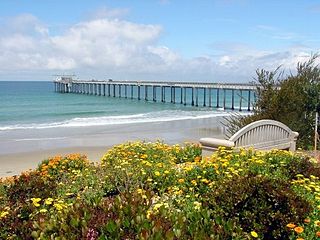
The Scripps Institution of Oceanography (SIO) is the center for oceanography and Earth science at the University of California, San Diego. Its main campus is located in La Jolla, with additional facilities in Point Loma.

Ampex Data Systems Corporation is an American electronics company founded in 1944 by Alexander M. Poniatoff as a spin-off of Dalmo-Victor. The name AMPEX is an acronym, created by its founder, which stands for Alexander M. Poniatoff Excellence. Ampex operates as Ampex Data Systems Corporation, a subsidiary of Delta Information Systems, and consists of two business units. The Silicon Valley unit, known internally as Ampex Data Systems (ADS), manufactures digital data storage systems capable of functioning in harsh environments. The Colorado Springs, Colorado, unit, referred to as Ampex Intelligent Systems (AIS), serves as a laboratory and hub for the company's line of industrial control systems, cyber security products and services and its artificial intelligence/machine learning technology.

Magnetic storage or magnetic recording is the storage of data on a magnetized medium. Magnetic storage uses different patterns of magnetisation in a magnetizable material to store data and is a form of non-volatile memory. The information is accessed using one or more read/write heads.

Revelle College is the oldest residential college at the University of California, San Diego in La Jolla, California. Founded in 1964, it is named after oceanographer and UC San Diego founder Roger Revelle. UC San Diego—along with Revelle College—was founded at the height of the Space Race between the United States and the Soviet Union. As a result, the initial class of 181 undergraduates comprised only 30 non-science majors. Revelle College focuses on developing "a well-rounded student who is intellectually skilled and prepared for competition in a complex world."

Roger Randall Dougan Revelle was a scientist and scholar who was instrumental in the formative years of the University of California, San Diego and was among the early scientists to study anthropogenic global warming, as well as the movement of Earth's tectonic plates. UC San Diego's first college is named Revelle College in his honor.
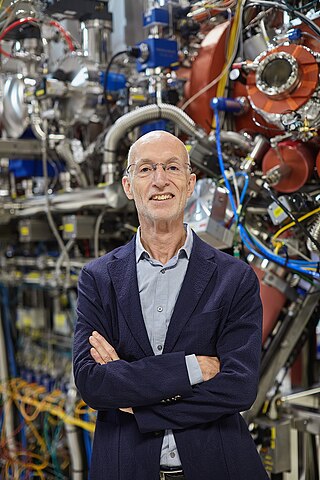
Stuart Stephen Papworth Parkin is an experimental physicist, Managing Director at the Max Planck Institute of Microstructure Physics in Halle and an Alexander von Humboldt Professor at the Institute of Physics of the Martin-Luther-University Halle-Wittenberg.
The Irwin and Joan Jacobs School of Engineering is an undergraduate and graduate-level engineering school offering BS, BA, MEng, MS, MAS and PhD degrees at the University of California, San Diego in San Diego, California. The Jacobs School of Engineering is the youngest engineering school of the nation's top ten, the largest by enrollment in the University of California system, as well as the largest engineering school on the West Coast and the ninth-largest in the country. More than thirty faculty have been named members of the National Academies. The current dean of the Jacobs School of Engineering is Albert P. Pisano.
Achates Power is an American developer of opposed-piston, two-stroke, compression ignition engines for use in commercial and passenger vehicles. Based in San Diego, California, the company was founded in 2004 by James U Lemke.

Bruce Alvin Gurney was an American physicist responsible for pioneering advances in magnetic recording. In particular, he was central to the development of the giant magnetoresistance (GMR) sensors first used in hard disk drives in 1997.
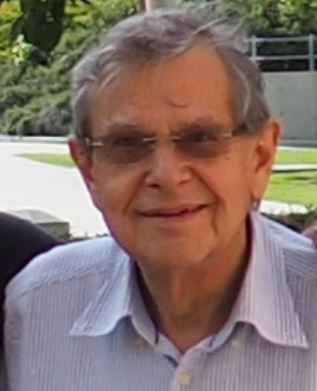
Forman Arthur Williams is an American academic in the field of combustion and aerospace engineering who is Emeritus Professor of Mechanical and Aerospace Engineering at the University of California San Diego.
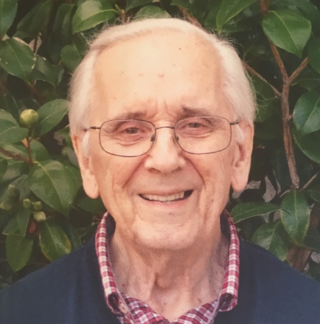
Charles Denis Mee was a British-American engineer, physicist, and author who was noted for his contributions in the areas of magnetic recording and data storage on hard disk drives (HDD). A large part of his career was with IBM in San Jose California. He is the author or editor of several books on magnetic recording.

John C. Mallinson was a British physicist who made significant contributions to the understanding of magnetism and magnetic recording. He is perhaps best remembered for his theoretical work on structures with one-sided magnetic flux. Their use is exemplified in the Halbach array and in the familiar refrigerator magnet.

Stéphane Mangin is a physicist and professor at the University of Lorraine in Nancy, France. He is head of the Nanomagnetism and Spintronics group at the Institut Jean Lamour, a laboratory jointly run by the CNRS and the University of Lorraine.

Ying Shirley Meng is a Singaporean-American materials scientist and academic. She is a professor at the Pritzker School of Molecular Engineering at the University of Chicago and Argonne Collaborative Center for Energy Storage Science (ACCESS) chief scientist at Argonne National Laboratory. Meng is the author and co-author of more than 300 peer-reviewed journal articles, two book chapter and six patents. She serves on the executive committee for battery division at the Electrochemical Society and she is the Editor-in-Chief for MRS Energy & Sustainability.

Mason Lamar Williams III was an engineer and physicist, noted for his contributions in the areas of magnetic recording and data storage on hard disk drives (HDD). A large part of his career was with the IBM Almaden Research Center in San Jose, California. After retiring, Williams played a major role in the restoration and demonstration of the IBM RAMAC at the Computer History Museum in Mountain View, California

Robert E Fontana is an engineer, physicist, and author who is noted for his contributions in the areas of magnetic recording and data storage on hard disk drives (HDD) and on digital tape recorders. His work has concentrated on developing thin film processing techniques for nano-fabrication of magnetic devices including Giant Magnetoresistance read heads now used universally in magnetic recording. Much of his career was with IBM in San Jose, California. He is a Fellow of the Institute of Electrical and Electronics Engineers and a member of the National Academy of Engineering.

Neal Bertram is a physicist noted for his contributions to the theory of magnetic recording. From 1968 to 1985, he worked for Ampex Corporation in Redwood City. From 1985 to 2004, he was an Endowed Chair Professor at the Center for Memory and Recording Research (CMRR), University of California at San Diego. He is the author of the book "Theory of Magnetic Recording". He is an elected Fellow of the Institute of Electrical and Electronics Engineers. In 2003, he won the IEEE Reynold B. Johnson Information Storage Systems Award.
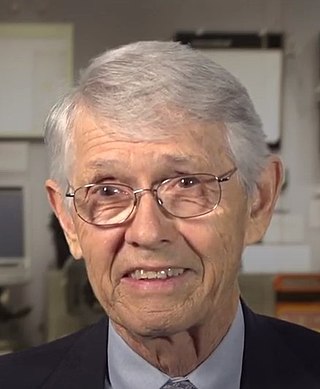
David Beauregard Bogy is the William S. Floyd, Jr. Distinguished Professor of the Graduate School at the University of California, Berkeley (UCB). He is also the founder and head of the Computer Mechanics Laboratory (CML) at UCB.. He has made particular contributions in air-bearing analysis and design for the sliders that support the read/write heads in hard disk drives (HDD).
Albert Smiley Hoagland had a long career on the development of hard disk drives (HDD) starting with the IBM RAMAC. From 1956 to 1984, he was with IBM in San Jose, California, and then, from 1984 to 2005, he was the director of the Institute for Information Storage Technology at Santa Clara University. He wrote the first book on Digital Magnetic Recording. Hoagland played a central role in the preservation and restoration of the IBM RAMAC now displayed at the Computer History Museum, Mountain View, California. He died in Portland, Oregon, on 1 October 2022.

















